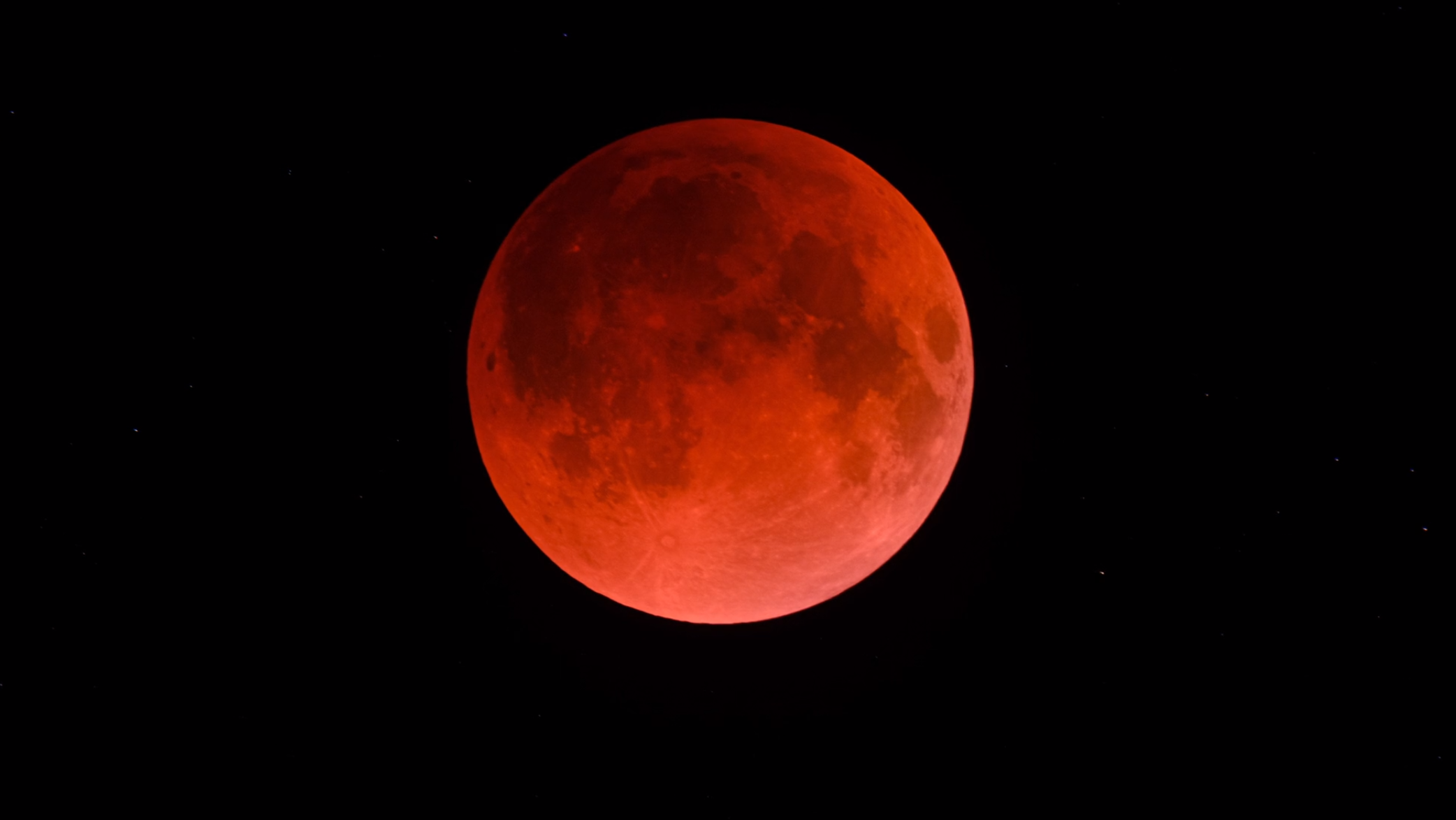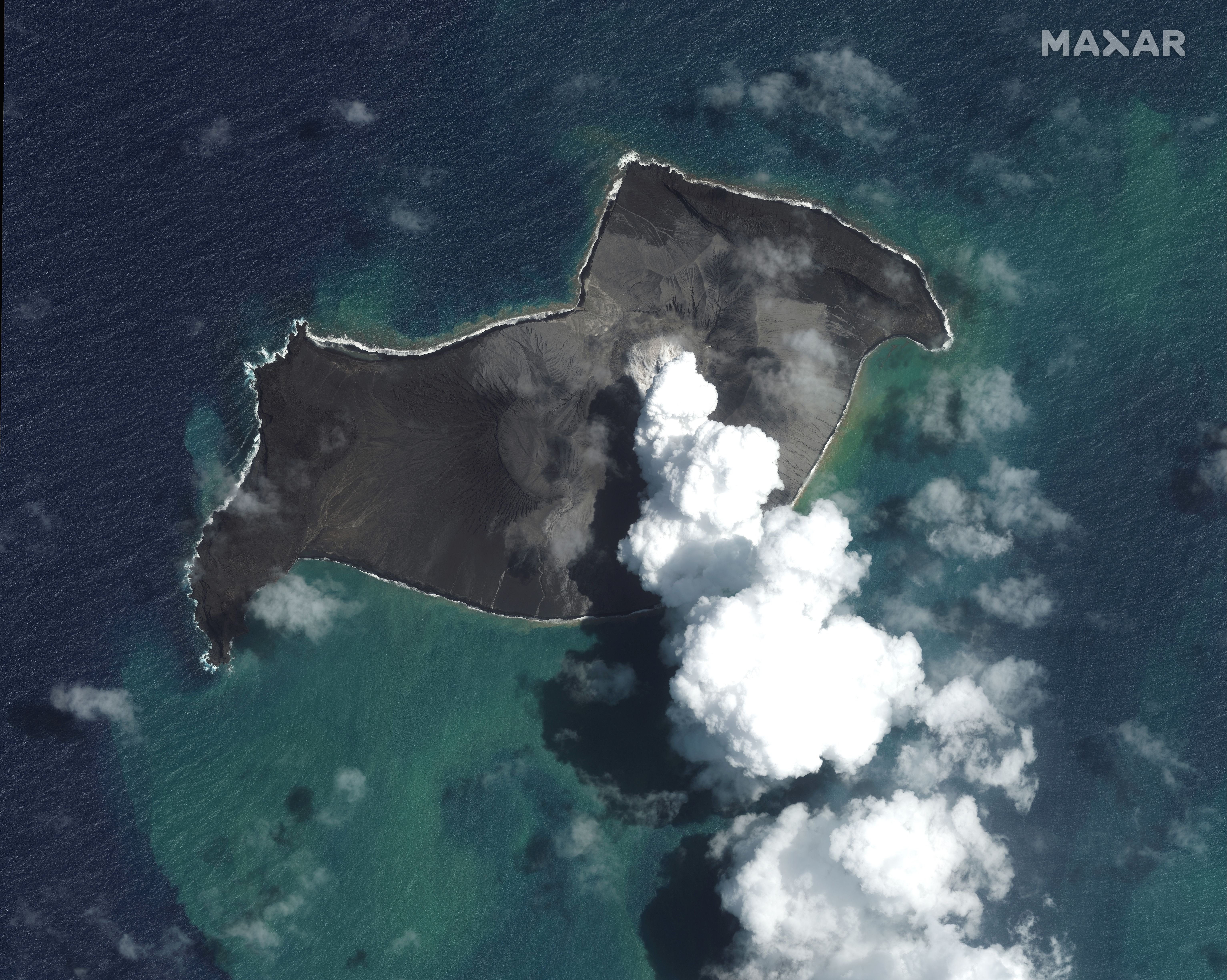
Medieval tomes that recorded when the moon ranged in color from blood-red to pitch-black during lunar eclipses may help reveal vital clues about the volcanic eruptions that may have triggered the Little Ice Age in Europe, a new study finds.
Volcanic eruptions can have major impacts on Earth by spewing out ash, gas and dust that can block light from the sun, triggering "volcanic winters." For example, in 1815, Mount Tambora in Indonesia exploded in the largest volcanic eruption in recorded history, which led the following year, 1816, to become known as the Year Without a Summer. The resulting climate anomalies led to snowstorms in June in New England and crop failures worldwide, killing more than 100,000 people from the resulting famines over the following decade, the U.S. National Oceanic and Atmospheric Administration noted.
The main ways in which scientists have investigated the effects that volcanic eruptions have on climate include estimating the acidity and amount of volcanic ash in polar ice core samples. They also have deduced such changes from the amount of growth, or lack thereof, in tree rings.
Related: What is the moon phase today? Lunar phases 2023
However, the complex nature of atmospheric circulation has led to substantial uncertainty in the precise location, timing and intensity of volcanic eruptions based on both polar ice core samples and tree ring data. This makes it difficult to reliably estimate the climate effects of these eruptions.
"I began searching for alternative tools, methodologies that could supplement existing techniques," study lead author Sébastien Guillet, a paleoclimatologist at the University of Geneva in Switzerland, told Space.com.
Guillet and his colleagues now suggest that medieval tomes from around the world that recorded details about lunar eclipses may help shed light on the climate effects of volcanic eruptions.
"What I find particularly fascinating about these results is the intersection of ancient knowledge and modern science," Guillet said. "It's remarkable to think that observations made by monks hundreds of years ago are still valuable today and can shed light on our understanding of how volcanic eruptions impact the climate."
The scientists investigated the High Medieval Period, ranging from 1100 to 1300 AD. Previous research suggested volcanism during this time may have helped trigger the Little Ice Age, a long span of cooling that saw the advance of European glaciers.

The researchers focused on historical accounts of total lunar eclipses — when the moon is fully in Earth's shadow. Normally, during a total lunar eclipse, the moon takes on a reddish hue because of the way Earth's atmosphere scatters sunlight onto the shadowed area. Blue and green light gets scattered more than red light, leaving mostly red light to fall on the moon, Guillet explained.
However, volcanic eruptions can blast substantial amounts of ash and gas into the stratosphere, the layer of Earth's atmosphere ranging from about 6 miles to 11 miles (10 to 17 kilometers) to 30 miles (50 km) in altitude. These veils in the stratosphere can block sunlight, causing the moon to appear significantly darker during a total lunar eclipse. They would also have much stronger climate effects than volcanic emissions in the troposphere, the atmospheric layer below the stratosphere.
"Some of the darkest total lunar eclipses ever recorded followed large volcanic eruptions, such as the 1883 Krakatau, the 1963 Agung, the 1982 El Chichon and 1991 Pinatubo eruptions," Guillet said.
The scientists examined a total of 180 European, 10 Middle Eastern and 199 East Asian medieval records. These respectively described 51, 7 and 61 total lunar eclipses.
"The timing of lunar eclipses is highly precise, which makes them an excellent reference point for determining the time window during which a volcanic eruption occurred," Guillet said.
Related: Amazing photos of the last Blood Moon lunar eclipse of 2022 (gallery)
Christian records proved the most informative for the new study, providing data on the color and brightness of the moon for 36 eclipses. The researchers suggested that lunar eclipse color was imbued with great significance for Christian observers, perhaps due to Christian texts such as the Book of Revelation of John, in which a blood-red moon, along with earthquakes and solar eclipses, portended the end of the world.
While this research "was a fascinating task, it was also very time-consuming. We had to go through hundreds of texts written in languages that are not widely used anymore," Guillet recalled.
By examining the color and brightness of total lunar eclipses in ancient texts, the researchers could estimate the strength of the effect volcanic eruptions had on the stratosphere and therefore global climate. The research team's findings suggested they could estimate the year and, in some cases, even the month of volcanic eruptions.
The scientists compared these historical findings with modern research of the amount of time between eruptions and resulting effects on the atmosphere and climate. They linked five dark and two reddish lunar eclipses to major eruptions during the High Medieval Period. Dark lunar eclipses were observable for three to 20 months after an eruption.
The researchers then compared these estimates with tree-ring records in the Northern Hemisphere, in which unusually cold summers are linked to reduced wood formation. They found that five of these eruptions in 1110, 1172, 1229, 1258 and 1276 AD had a strong impact on the climate, while the remaining eruptions seemed to have had less effect.
This improved dating of major volcanic eruptions is "crucial for accurately quantifying the impact of these eruptions on climate," Guillet said. For instance, researchers can better understand how much volcanic eruptions played a role in the onset of the Little Ice Age compared with other factors, such as a period of low solar activity between 1280 and 1340. "This understanding will enhance our comprehension of how ancient societies were impacted by volcanism," Guillet noted.
The scientists noted, however, that this new technique is not flawless. Only comments on the color of the moon are relevant, and accounts of partial eclipses cannot be used, since they essentially do not discuss what the atmosphere was like. "It's important to combine this method with other records, such as ice cores," Guillet said.
With a better understanding of the timing of these eruptions, "we can now focus on investigating how these eruptions impacted both climate and societies," Guillet said. "This is the direction that we will take during the next few months."
In addition, "we intend to broaden our research to other periods of high volcanic activity and see if total lunar eclipse records exist that could help us further refine the dating of these events," Guillet said. "But this is not an easy task, because as we go back in time, the number of historical records providing information about the color of the eclipsed moon decreases."
The scientists detailed their findings in the April 6 in the journal Nature.
Follow us @Spacedotcom, or on Facebook and Instagram.







